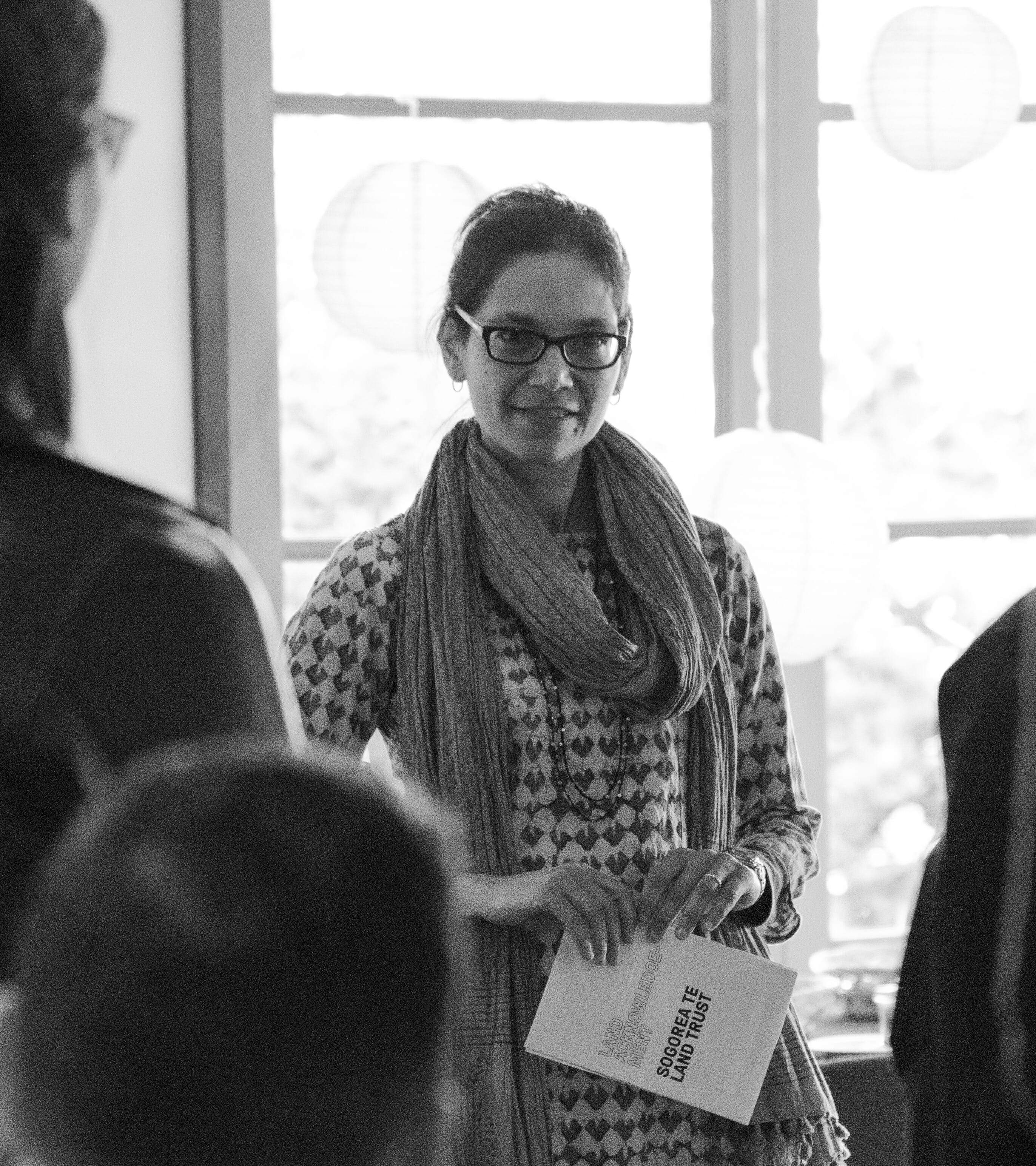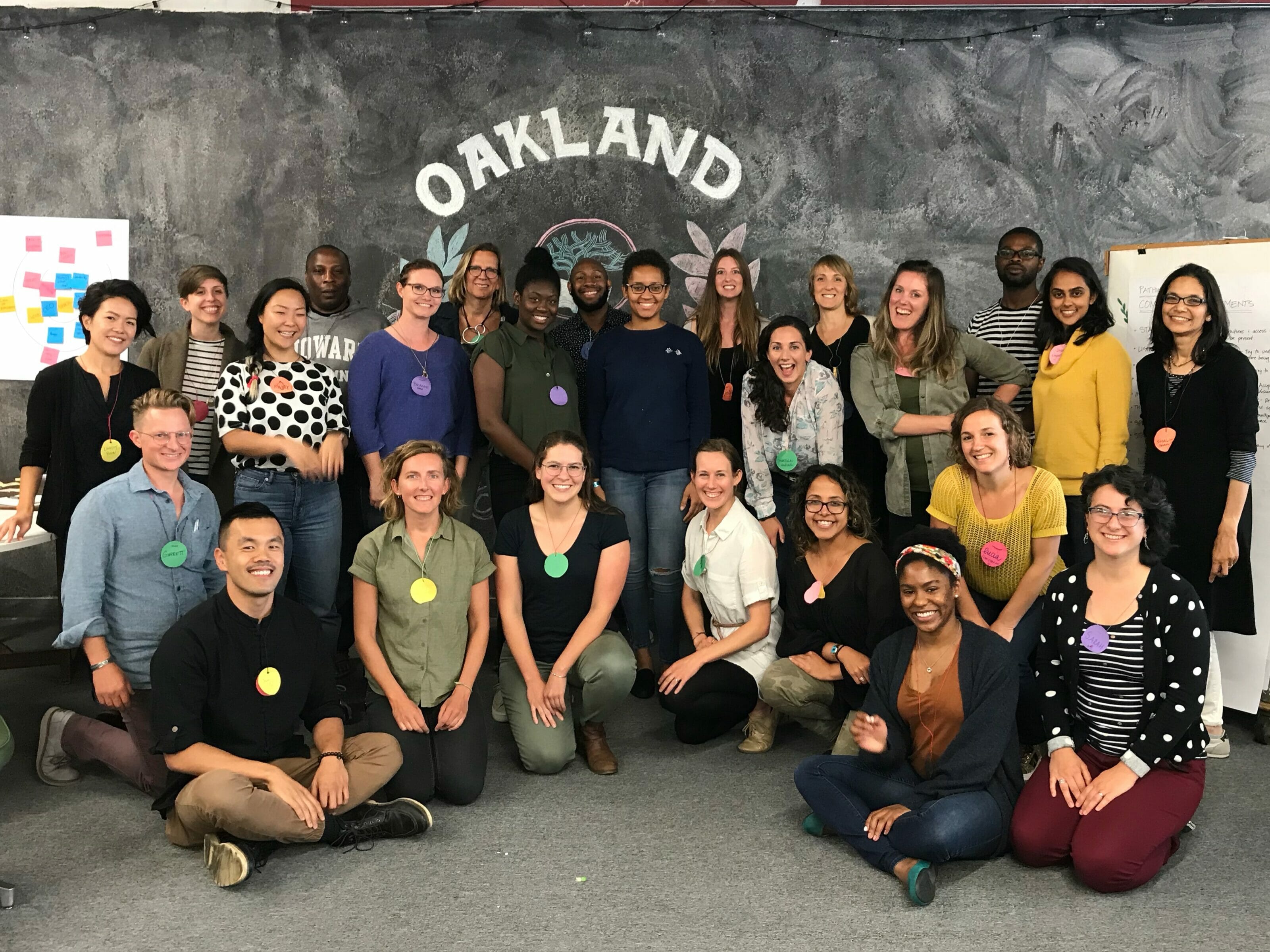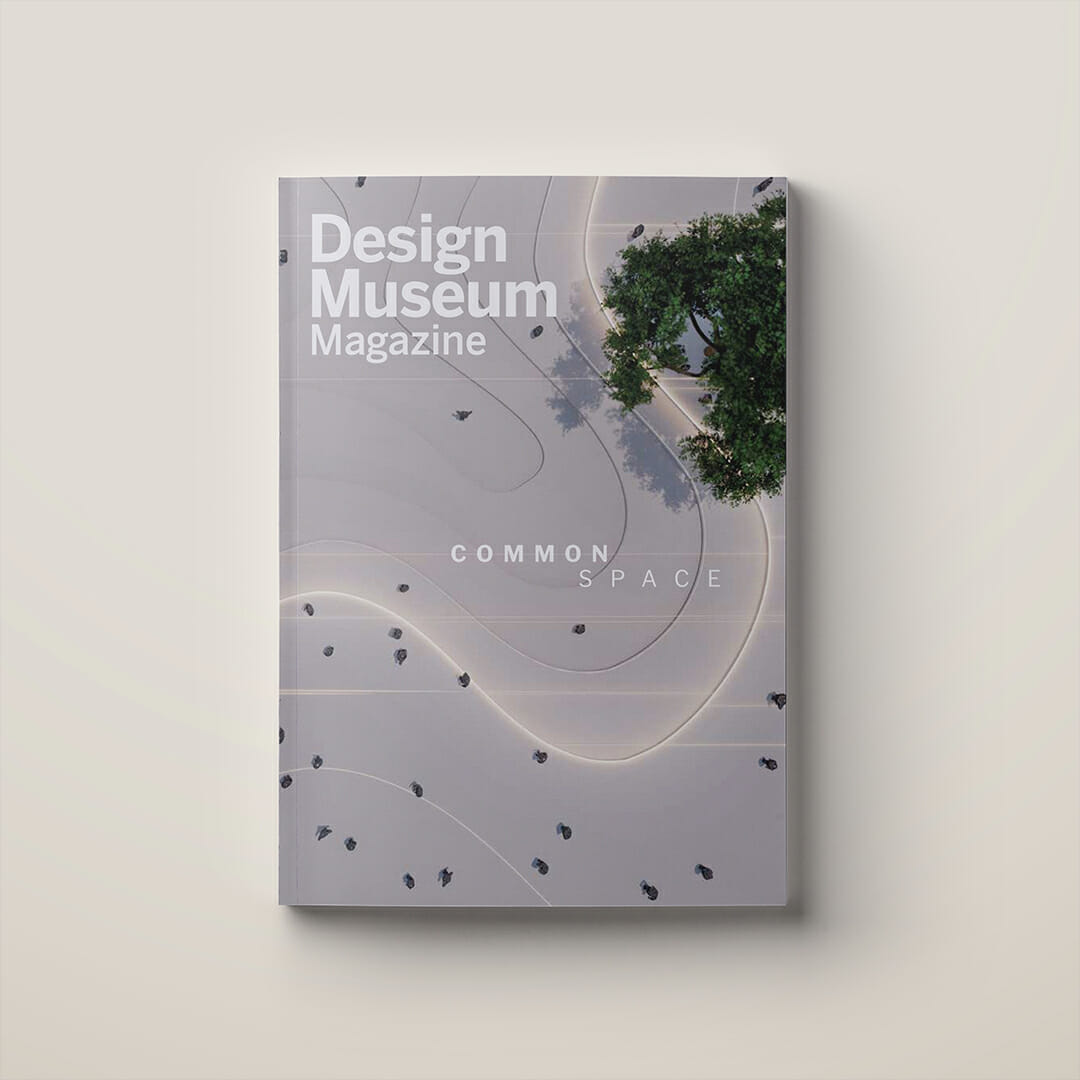Pathways to Equity: Learning in Community

Photo of Shalini Agrawal
A Conversation with Shalini Agrawal and Karen Robichaud
I sat down with Shalini Agrawal, the Director of Programs for Pathways to Equity, an Open Architecture Collaborative Program to discuss her perspective on designing for community and common spaces. Pathways to Equity is a design leadership experience for social equity that fosters a supportive space for practitioners whose work impacts the built environment. I first got to know Shalini and Pathways to Equity when we were paired up with two other co-speakers to present and facilitate discussion for the 2018 Equity by Design Symposia in San Francisco. Since then we’ve had the pleasure to continue our dialogue about what we unlearn as we shift toward more equity-based design and how designers can understand their role and impact in community development work.
Q: The core theme of this issue is the notion of common space. Can you share how you think about common space, particularly given your experience centering community driven design?
“Commons” is about shared resources and shared space. It’s envisioning the possibilities of relationships, reciprocity, and adaptability within the dynamics of an environment. With community-driven design, it’s reckoning with what spatial belonging means, who defines it, and where these definitions are drawn from. “Belonging” is an individual and personal experience. We know what it means to belong, and not belong, in an environment, it’s the context of our lived experience in space. If we really reflect deeply on how we approach spatial design, who engages in these spaces, and how these places get used, we should turn our attention to the process.
Q: What’s the process behind your work? How is it different from what’s traditionally taught as the design process?
As architects and designers, we are taught to be specialized in an area of knowledge, to be experts at what we do. In fact, it is often expected. We are taught to bring our expertise, but I’ve learned that in community engagement, the process rebalances itself to be an exchange of knowledge, and learning with the community. Community engagement is the development of relationships with collaborators and community members that are grounded in shared expectations, open communication, and mutually beneficial exchanges. It allows us to lead with listening instead of solutions. It moves us away from the harms of implicit biases and assumptions, and shifts the expertise to those who are closest to the issues. It results in better outcomes. This has been a transformational learning for me.
The field of design and architecture focuses on outcomes. When this goal directs our process, we risk excluding critical knowledge. This urgency leaves out crucial information that provides a better understanding of who this work is for, and what everyone brings to the process. In my work I’m always asking: How can we move towards deeper relationships, to sustain over the long run?
Q: How does what you’ve learned through this work show up in how Open Architecture Collaborative approaches design?
Open Architecture Collaborative (OAC) is taking a different approach to design by pausing to reflect on who holds “expertise.” One of the most humbling things I’ve learned in doing this work is that we all have something to bring, we all have expertise. It’s not held by any one person. The role of architect, designer, or planner can shift from someone who knows all the “answers,” to one of facilitator, or conversation holder. It’s about creating a space where people’s voices are heard, and moves from designing for to designing with. That is the ethos of OAC – how do we design with people? We have taken that one word with and have created a whole curriculum around it.
Pathways to Equity is a 10 week online program for architects and designers across the US to learn not just how to engage with community, but how to do so equitably. How are we not just checking a box or fulfilling something that is required? We believe that we have to invite ourselves into the process rather than standing behind our expertise. Who we are and how we show up plays a role in how people interact with us. We build a learning community so you’re learning with others who are also interested in more effective engagement.
Q: How does this work? How do you move toward deeper relationship with communities in the context of a project?
Deepening relationships requires time to deepen connections, and an openness to learn from others. Our traditional training and education is designed to set us up as professionals who bring knowledge and expertise to evaluate what is “wrong” and offer a solution. This approach can create a distance between providing a solution, but not really knowing or understanding the problem. When it comes to the built environment, it’s really important to think beyond the mindset of fixing what’s “wrong.” In our work we ask: How can we be responsive with our approach? Equity, by definition, is not one size fits all, meaning the individual voice matters and contribution matters. By inviting people to be a part of the process, there’s a sense of ownership that is an investment. It’s real sustainability. Getting people invested in the process can have a powerful impact for a community.

Pathways to Equity In Person Fellowship 2018-2019 © Open Architecture Collaborative.
Q: It sounds like a part of this work is learning what you need to unlearn from traditional practice. I’m thinking of your comment about decentering your expertise. Can you share what you’ve unlearned?
RELATIONSHIPS
I think about this in the context of folks working in government, because the government is working for their constituents. And yet there is often a disconnect and apprehension with working with the government. But there are folks who are dedicated to improving conditions for the community. I’ve talked about the value of cultivating relationships, so we ask: How can we bridge the gap? How do you rebuild trust when trust has been broken? Or, how do you build trust when it has not existed before? The more communities are empowered to be part of the process, the more successful the process.
TRUST
You can’t do this quickly. There’s no quick fix. I like to remind people to “move at the speed of trust.” Trust takes time, and we tend to engage based on lived experiences and how we have experienced engagement in the past. Those experiences shape how we show up in relationships.
PAUSE THE PROCESS
One of the most powerful practices that I’ve incorporated in the community engagement process is holding time for listening, and asking; “What’s on your mind? What have we not said that needs to be said?” Pausing the process to be more inclusive and equitable is really about asking questions to speak to the challenges, concerns and omissions. It’s challenging the status quo of our current processes in place.
Our process has been designed to expedite and prioritize decision-making. How can we allow for more spaciousness in our process? Slowing down is not inherently integrated in how we work. However, I have seen the benefit of taking time to build relationships, and that investment allows for a more responsive result.
The most authentic way of engaging communities is to be your authentic self. Engage as a guest in a community, without the expectation that you’re getting something in return, but instead bringing something to share.
Q: Could you share some specific projects where you’ve brought community-driven design to the fore and what you learned on those projects?
DESIGN FOR BELONGING
I held a design workshop for young girls 8-12, to design a maker space for belonging. There was an assumption that girls wanted to make in completely different spaces than boys. These young girls designed a maker space that supported their methods of making. We explored what it felt like to belong to a space, and the qualities of that space. What emerged was that they wanted the same space, but with more inclusive rules of engagement. In addition to modeling the physical space, they created a list of engagement practices, which centered on collaboration and respect. It’s not just the space, it’s how you engage in space. I learned so much from them.
ONGOING TRUST
We worked with a community leader with two Pathways to Equity teams for a few years and we brought in an evaluator to assess our process. The evaluator was someone in my network, but outside of the community. It didn’t occur to me that the dynamic of someone coming in and asking questions about their experience would create distrust. Even though the project had been completed, I overlooked that the evaluation was also a part of the process of engagement, communication and relationship. Trust-building has to happen at every single stage in the process. I’ve learned to re-envision the “evaluation process,” as part of the relationship-building process, and another opportunity to support the work of the community partner.
Q: You’re talking a lot about slowing down and shifting the process; how do you measure success? Are there community indicators you look for that tell you “this worked?”
The measure of success is the willingness to continue the collaboration and work together, when there’s a sense of “I’m here for you, I’m also counting on you.” It’s a reciprocal relationship. It can lead to another project, which also speaks to the sustainability of the work. Measures of success are in the stories of how the intended design is being used and the impact on community. It’s more qualitative and less quantitative.
The relationship between quantitative and qualitative measures are merging back together. We swing one way and then the other, and it’s good to measure things that you can measure like building performance or the number of people using the program each year and we can understand if the project hit its targets. Those are measurable, but then the question is about: how you feel and did it actually have that desired impact; did the social dynamic change in the community? That’s where quantitative and qualitative measures come back together.
Q: I’m curious, what kind of conversations do you have with folks who are focused on delivering a project “on time and on budget?” That focus can feel in tension with the approach you propose. What have you seen change as you’ve been doing this work?
I see community engagement as part of the conversation and a wide-spread understanding that it’s better for the design process. But there’s a gap in understanding how to integrate it into an existing process.
I ask: Can we think about something in a different way? It doesn’t mean revamping the entire system, but investing in small, incremental steps which seed change.
I believe in the power of small steps, which can be a first step towards social justice. We are trained to be creative problem-solvers in how we develop and deliver a project or product. But what happens when we’re creative with process? Can there be moments in which we can find out how people are thinking? Can we make decisions based on what brings people joy? What if we imagine the possibilities of equity and inclusion instead of giving up before we start? We can begin with the question “what happens if…?”, as opposed to, “we’ve always done it this way.”
Q: Much of your approach is rooted in asking expansive questions; encouraging your collaborators or students to approach a challenge differently, what are some considerations you’d like to leave our readers with?
When engaging communities, take time to invest in relationships. It inherently moves current processes from transactional to relational. Center listening, active listening is an act of social justice. Pause the process: it is a first step to disrupting business as usual. Be your authentic self: connection begins with who we are as humans.
